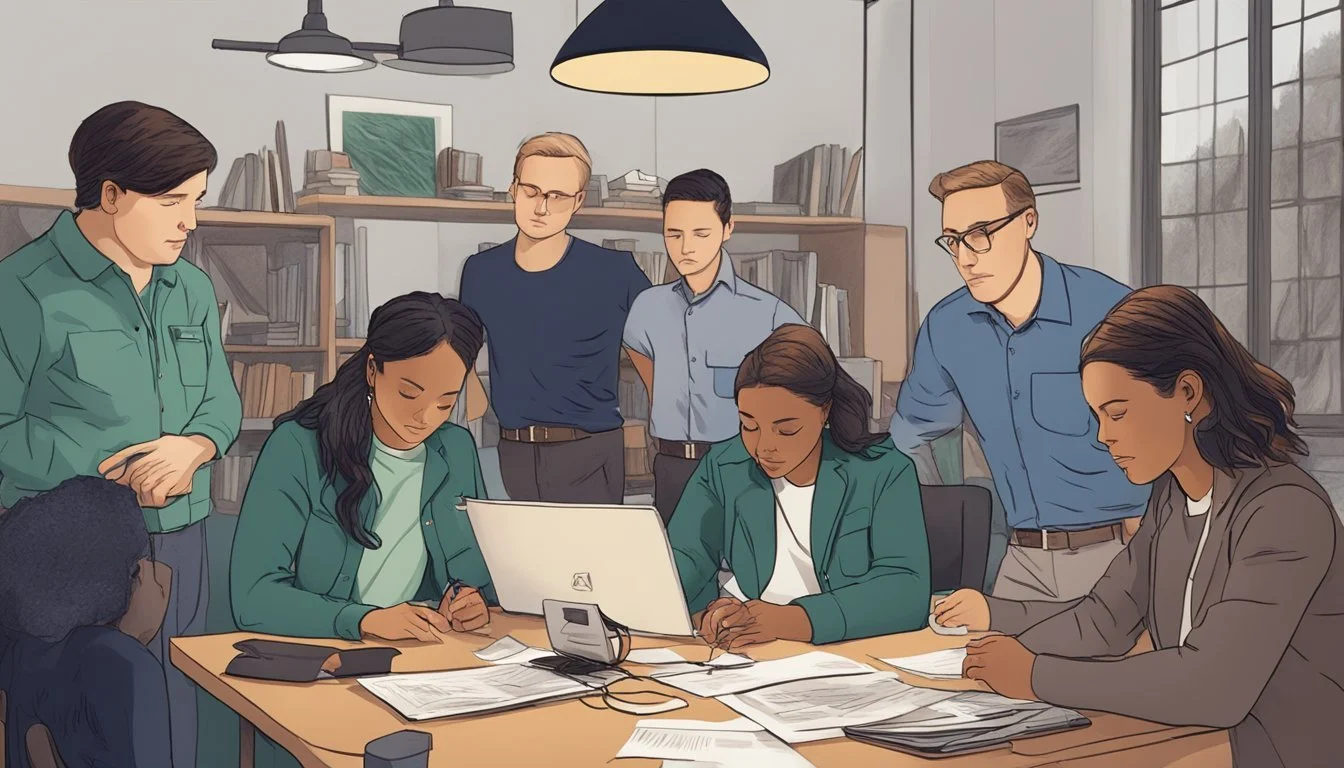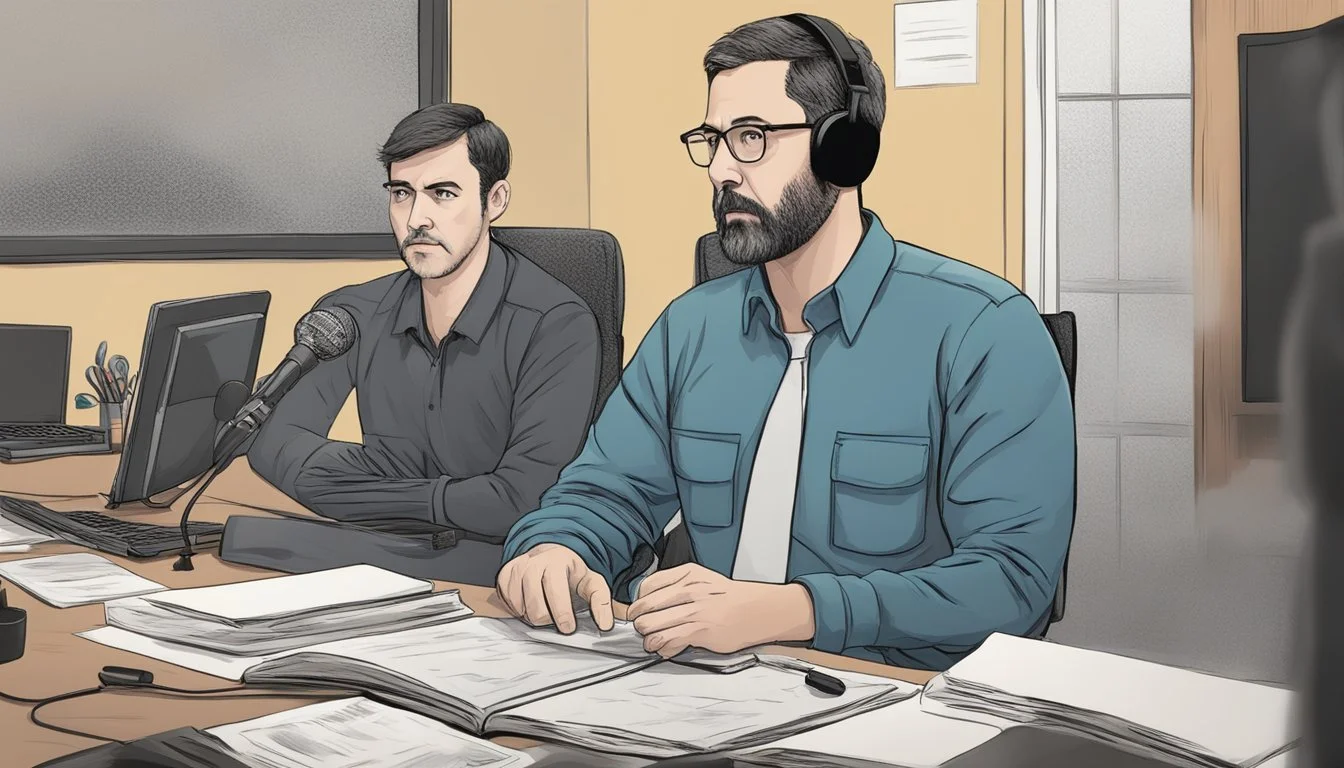Bear Brook: Unidentified Victims Find New Life
Podcast Sparks Documentary Interest
The Bear Brook case, a decades-old mystery involving unidentified victims found in New Hampshire, has captivated true crime enthusiasts and investigators alike. The story gained renewed attention through the "Bear Brook" podcast, which delved into the complex investigation and the revolutionary use of genetic genealogy in solving cold cases.
The podcast's impact extended beyond its audio format, inspiring documentaries that brought visual elements to the haunting narrative. These visual adaptations helped reach new audiences and reignited interest in identifying the remaining victims. The combination of audio storytelling and documentary filmmaking created a powerful multimedia approach to exploring the case.
The Bear Brook investigation's progress demonstrates the evolving nature of forensic science and detective work. As new technologies emerge and public interest grows, cold cases like Bear Brook find new life in the digital age. The collaborative efforts of law enforcement, genealogists, and media have pushed the boundaries of traditional investigative methods, offering hope for closure in long-unsolved crimes.
Origins of 'Bear Brook'
The Bear Brook case began in November 1985 when hunters discovered two bodies in a metal drum near Bear Brook State Park in Allenstown, New Hampshire. The victims were a woman and a young girl, both unidentified at the time.
Nearly two decades later, in 2000, investigators found a second barrel containing two more bodies of young girls. This discovery reignited interest in the case and sparked numerous investigations over the years.
In 2015, New Hampshire Public Radio reporter Jason Moon started looking into the Bear Brook murders. His research and interviews with law enforcement officials, forensic experts, and amateur sleuths formed the basis for the "Bear Brook" podcast.
Launched in 2018, the podcast quickly gained popularity among true crime enthusiasts. Moon's thorough reporting and compelling storytelling brought new attention to the long-unsolved mystery.
The podcast explored the complex investigation, including the use of genetic genealogy to identify the killer and victims. It also highlighted the collaborative efforts between law enforcement and citizen detectives in solving cold cases.
"Bear Brook" played a crucial role in raising public awareness about the case. The increased attention led to new leads and eventually helped identify three of the four victims, marking a significant breakthrough in this decades-old mystery.
Evolution of True Crime Storytelling
True crime storytelling has undergone a dramatic transformation in recent years. Innovative formats and investigative techniques have reshaped how cold cases are explored and presented to the public.
Podcast Pioneers
True crime podcasts revolutionized the genre. "Serial" captivated millions in 2014 with its in-depth examination of a murder case. Its success paved the way for other groundbreaking series. "In the Dark" won acclaim for its rigorous reporting on flawed investigations. "My Favorite Murder" blended comedy with crime, attracting a devoted fanbase.
These podcasts went beyond simple retellings. They often conducted original research, uncovered new evidence, and even influenced real-world outcomes. "Dr. Death" exposed medical malpractice, leading to policy changes and increased awareness.
Mainstream Media Impact
The popularity of true crime podcasts caught the attention of mainstream media. Television networks and streaming platforms began adapting podcast stories into documentary series. This crossover expanded the reach and impact of these investigations.
High-profile adaptations brought cold cases to new audiences. They utilized visual elements to enhance storytelling, recreating crime scenes and presenting evidence in compelling ways. The increased exposure often generated fresh leads and renewed public interest in unsolved crimes.
This evolution in true crime storytelling has had tangible effects. It has helped solve cold cases, exonerate wrongly convicted individuals, and shine a light on flaws in the justice system.
Case Details and Development
The Bear Brook murders shocked New Hampshire and puzzled investigators for decades. Multiple victims were found in barrels in Allenstown, with breakthroughs coming years later through advanced forensic techniques and genetic genealogy.
The Discovery of the Victims
In 1985, a hunter stumbled upon a 55-gallon drum containing two bodies in Bear Brook State Park. The grim discovery included an adult woman and a young girl. Fifteen years later, in 2000, another barrel was found nearby with two more young girls inside.
All four victims showed signs of blunt force trauma. The barrels were located within 300 feet of each other in the woods. Police determined the victims had been killed between 1977 and 1985.
Investigation and Breakthroughs
For years, the case remained cold. The victims were unidentified, with no leads on their killer. In 2015, genetic testing revealed a breakthrough - three of the victims were related. The woman was likely the mother of two of the girls.
In 2017, DNA evidence linked the murders to Terry Peder Rasmussen, a serial killer known by multiple aliases. He had died in prison in 2010 while serving time for another murder.
Genetic genealogy finally put names to three of the victims in 2019. The woman was Marlyse Elizabeth Honeychurch, and two of the girls were her daughters. The fourth victim, believed to be Rasmussen's daughter, remains unidentified.
Influence on Public and Criminal Justice
The Bear Brook murders case profoundly impacted law enforcement practices and criminal psychology. Its wide-reaching effects reshaped investigative techniques and public engagement with cold cases.
Effect on Law Enforcement Techniques
The Bear Brook case revolutionized forensic science in criminal investigations. Genetic genealogy emerged as a powerful tool, leading to the identification of three victims. This technique combines DNA analysis with traditional genealogical research.
Law enforcement agencies now regularly employ this method to solve cold cases. The success in Bear Brook inspired departments nationwide to reexamine unsolved crimes.
Improved collaboration between agencies also resulted from this case. Information sharing became crucial, breaking down jurisdictional barriers.
Implications for Criminal Psychology
The Bear Brook murders provided valuable insights into serial killer behavior. Psychologists gained new understanding of long-term criminal patterns and victim selection.
The case highlighted the importance of considering familial relationships in investigations. It revealed how killers might target family units, not just individuals.
Criminal profilers now pay closer attention to geographic patterns and timelines. The Bear Brook killer's extensive travel added a new dimension to offender mobility studies.
This case also emphasized the psychological impact on communities affected by unsolved crimes. It sparked discussions about collective trauma and the need for closure in cold cases.
Cultural Representation and Podcast Analysis
The Bear Brook podcast sparked a wave of true crime documentaries and ignited discussions about storytelling in the digital age. Its influence extends beyond solving cold cases to shaping media narratives and public engagement with criminal investigations.
Podcast-Inspired Documentaries
True crime podcasts like Bear Brook have inspired a new generation of documentaries. These visual adaptations bring cold cases to life, combining audio storytelling with visual elements to create immersive experiences. Filmmakers use podcast material as a foundation, expanding on interviews and evidence to craft compelling narratives.
The success of Bear Brook-inspired documentaries has led to increased interest in unsolved crimes. This trend has prompted law enforcement agencies to revisit old cases, leveraging public interest to generate new leads.
Documentaries based on podcasts often incorporate social media elements, encouraging viewer participation and discussion. This interactive approach has created vibrant online communities dedicated to solving mysteries.
The Role of Podcasts in Social Narratives
True crime podcasts have become powerful tools for shaping social narratives. Bear Brook exemplifies how these audio series can raise awareness about forgotten victims and highlight systemic issues in criminal investigations.
Podcasts offer intimate, long-form storytelling that allows for deep dives into complex cases. This format has proven particularly effective in exploring the human elements of crimes, fostering empathy for victims and their families.
The success of Bear Brook and similar podcasts has led to a surge in citizen detectives. Online forums and social media groups dedicated to true crime have become hubs for information sharing and theory crafting. While this engagement can be beneficial, it also raises ethical questions about privacy and the potential for misinformation.
Podcasting Landscape and Influence
Podcasts have revolutionized storytelling and journalism, with true crime shows leading the charge. Key figures and platforms have shaped the medium's growth, while influential series have impacted national conversations and global narratives.
Key Figures in Podcasting
Madeleine Baran, host of "In the Dark," has set new standards for investigative podcasting. Her meticulous reporting on cold cases has influenced legal proceedings and public opinion. Ashley Flowers and Brit Prawat of "Crime Junkie" have built a loyal following with their engaging storytelling style.
Sarah Koenig's "Serial" broke new ground in 2014, paving the way for narrative-driven podcasts. Joe Rogan's expansive interviews have attracted millions of listeners, demonstrating the medium's potential for long-form content.
Impact on National and Global Narrative
True crime podcasts like "Bear Brook" have reignited interest in cold cases, leading to new investigations and solved mysteries. These shows often reach audiences far beyond traditional news outlets, shaping public discourse on criminal justice issues.
Spotify and Apple have become major players in podcast distribution, investing heavily in exclusive content and analytics tools. Their platforms have enabled podcasters to reach global audiences and monetize their work effectively.
Investigative podcasts have influenced policy decisions and legal outcomes in several high-profile cases. The medium's ability to dive deep into complex topics has made it a powerful tool for educating and mobilizing listeners on various social issues.
Unsolved Mysteries and Audience Engagement
True crime podcasts and documentaries have revolutionized public involvement in cold cases. They leverage audience curiosity and collective knowledge to breathe new life into stalled investigations.
Interactive Investigation Methods
Podcasts like "Bear Brook" employ innovative storytelling techniques to immerse listeners in the investigative process. Hosts present evidence, theories, and interviews in episodic formats, allowing audiences to follow along and form their own conclusions. This approach transforms passive listeners into active participants.
Social media platforms amplify engagement, creating spaces for discussion and speculation. Dedicated forums and Facebook groups emerge, where amateur sleuths share insights and debate case details. These online communities often uncover overlooked information or generate fresh leads for law enforcement.
Some podcasts incorporate interactive elements like maps, timelines, and photo galleries on their websites. These tools help visualize complex case information, making it more accessible to a broader audience.
Crowdsourcing and Case Solving
The power of crowdsourcing has proven effective in advancing cold cases. Rebekah Heath, a librarian and web sleuth, played a crucial role in identifying victims in the Bear Brook murders. Her diligent online research connected missing persons reports to the unidentified remains.
Podcasts often feature tip lines or dedicated email addresses, encouraging listeners to submit information. This direct channel to investigators has led to breakthroughs in several cases. Anonymous submission options protect tipsters who may be hesitant to approach police directly.
Law enforcement agencies increasingly recognize the value of public engagement through media. Some departments now collaborate with podcasters or documentarians, sharing case files and participating in interviews to generate new leads.
Notable Mentioned Works
"The Dropout" explored the rise and fall of Theranos founder Elizabeth Holmes. This podcast delved into corporate fraud and deception in Silicon Valley.
"White Lies" investigated the 1965 murder of Reverend James Reeb in Selma, Alabama. It uncovered new evidence in the long-unsolved civil rights case.
"Your Own Backyard" examined the disappearance of Kristin Smart. The podcast renewed interest in the cold case and led to arrests decades later.
"Morbid" covers true crime stories and paranormal topics. It blends dark humor with detailed research on various cases and phenomena.
"S-Town" began as an investigation into an alleged murder but evolved into a character study of a complex individual in rural Alabama.
"Someone Knows Something" tackles cold cases across Canada. Each season focuses on a different unsolved crime, using interviews and on-site reporting.
These podcasts share similarities with "Bear Brook" in their investigative approaches and ability to generate public interest in cold cases. They demonstrate the power of audio storytelling to shed new light on unsolved mysteries.
Conclusion
The Bear Brook case has left an indelible mark on true crime investigations and storytelling. New Hampshire Public Radio's podcast breathed new life into a decades-old mystery, captivating audiences worldwide.
This complex cold case spurred advancements in forensic science and investigative techniques. Genetic genealogy emerged as a powerful tool, revolutionizing how law enforcement approaches unsolved crimes.
The podcast's impact extended beyond entertainment. It reignited public interest in the case, leading to new leads and ultimately the identification of previously unnamed victims.
Bear Brook's legacy continues through documentaries and ongoing investigations. It serves as a testament to the power of persistent journalism and collaborative efforts between media, law enforcement, and the public.
The case remains a poignant reminder of the human stories behind cold case files. It underscores the importance of never giving up on seeking justice for victims, no matter how much time has passed.










